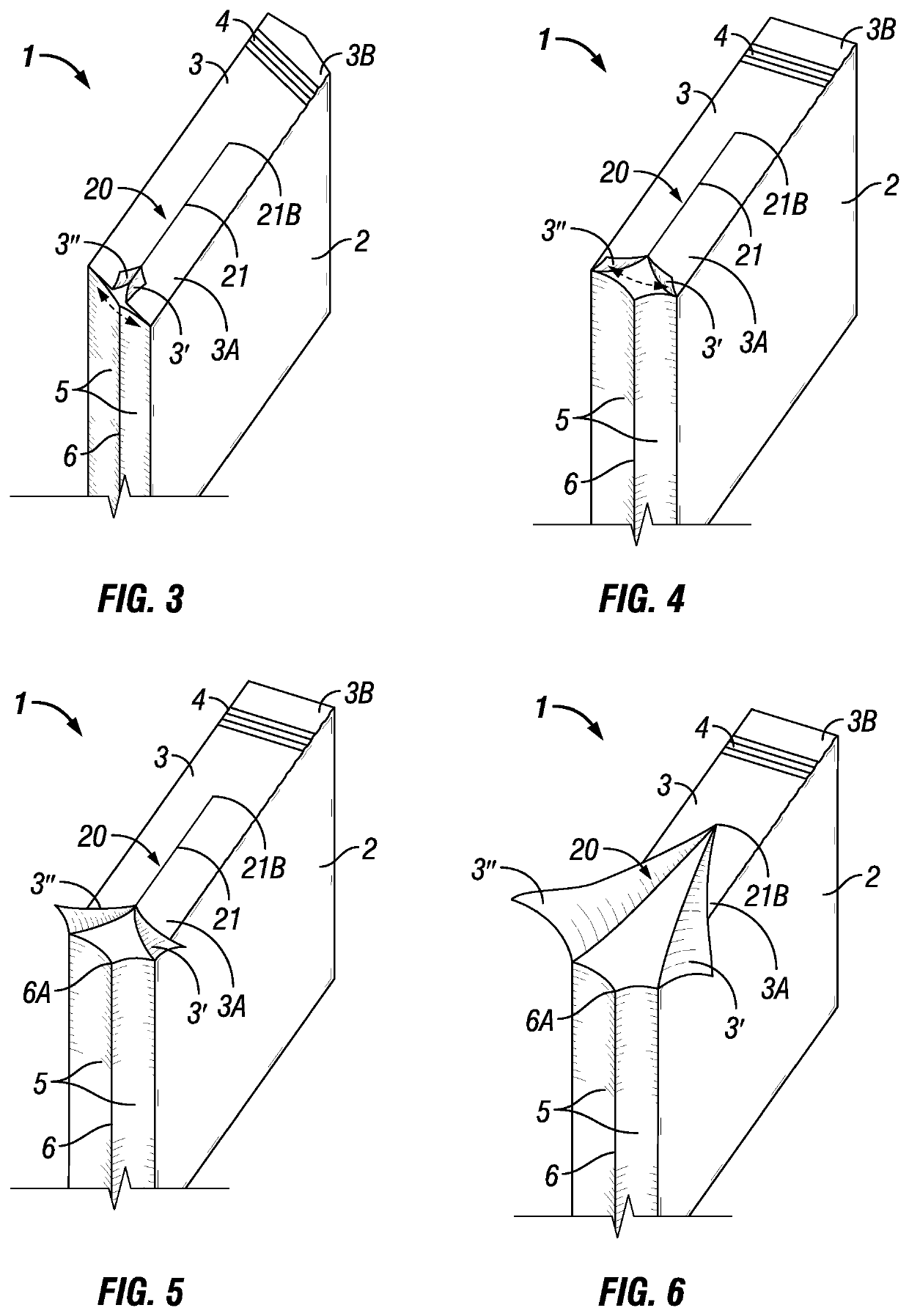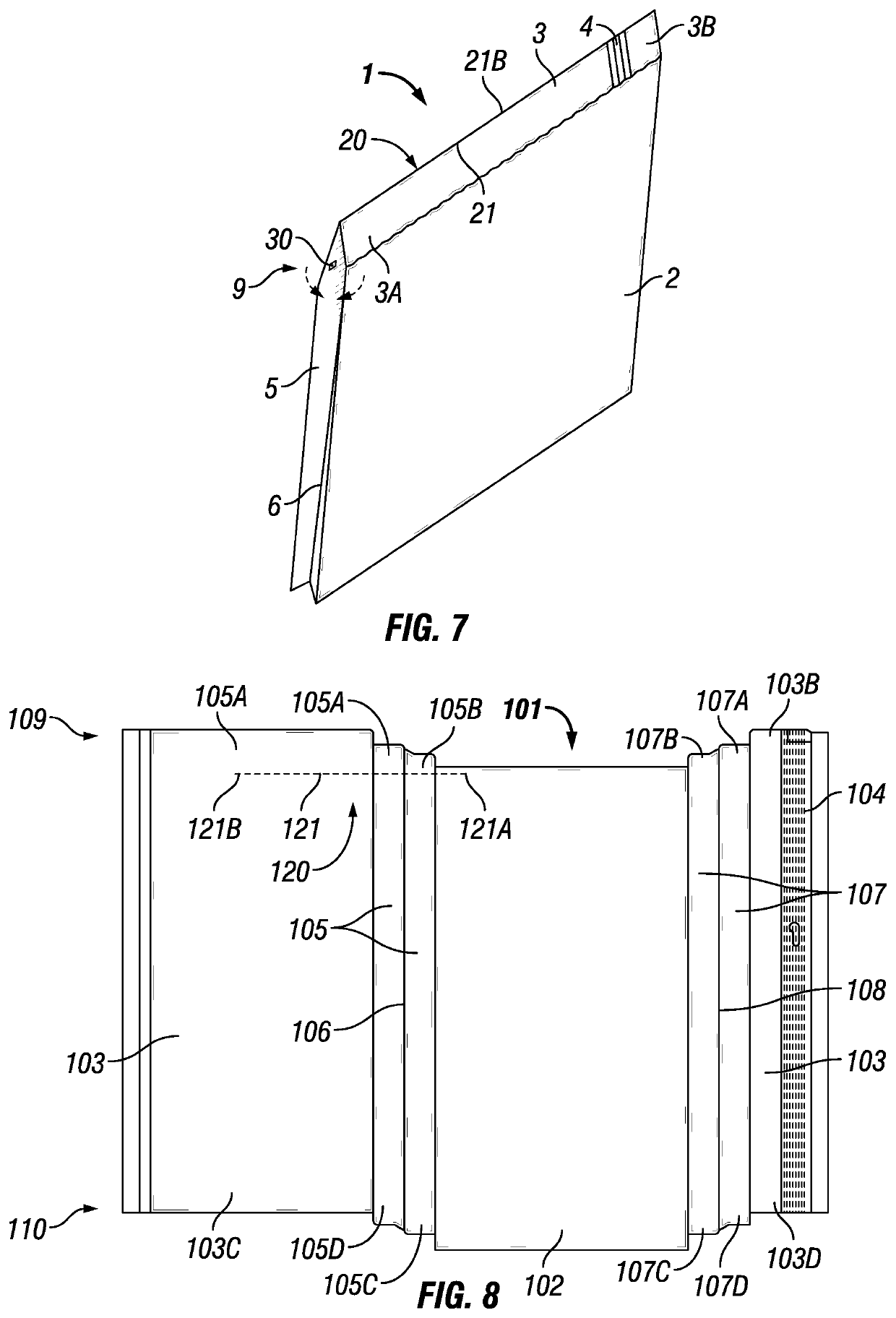Woven plastic bags with features that reduce leakage, breakage and infestations
a technology features, applied in the field of woven plastic bags, can solve the problems of limited use of woven bags in these applications, the inability of conventional bag processing equipment to cut and shape woven bags at the speeds required for high volume production, and the inability to close the bags at high speed filling lines, etc., and achieve the effect of convenient hand opening
- Summary
- Abstract
- Description
- Claims
- Application Information
AI Technical Summary
Benefits of technology
Problems solved by technology
Method used
Image
Examples
Embodiment Construction
[0081]Referring to FIG. 1, a planar view of an embodiment of a substantially flat sheet of material from which a “step cut” bag 1 is to be formed is shown. Shown on the sheet are front wall 2, rear wall 3, seam 4, first side wall 5 having gusset portion 6, and second side wall 7 having gusset portion 8. As shown in FIG. 1, the bag 1 has a first or top end 9 and a second or bottom end 10, and thus each of the front wall 2, rear wall 3, first side wall 5 and second side wall 7 has a first or top end and a second or bottom end. It will be apparent, however, that the orientation of the bag ends 9 and 10 are unimportant and the “top” and “bottom” references (as well as references to “right” or “left”) are useful but may change depending upon the orientation from which one views the bag. Bag 1 is considered a “step cut” bag because the front wall 2, the first side wall 5 and the second side wall 7, and the rear wall 3 are cut so that the front wall 2, the first side wall 5 and the second ...
PUM
| Property | Measurement | Unit |
|---|---|---|
| width | aaaaa | aaaaa |
| height | aaaaa | aaaaa |
| angles | aaaaa | aaaaa |
Abstract
Description
Claims
Application Information
 Login to View More
Login to View More - R&D
- Intellectual Property
- Life Sciences
- Materials
- Tech Scout
- Unparalleled Data Quality
- Higher Quality Content
- 60% Fewer Hallucinations
Browse by: Latest US Patents, China's latest patents, Technical Efficacy Thesaurus, Application Domain, Technology Topic, Popular Technical Reports.
© 2025 PatSnap. All rights reserved.Legal|Privacy policy|Modern Slavery Act Transparency Statement|Sitemap|About US| Contact US: help@patsnap.com



